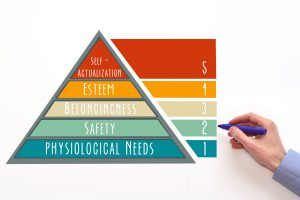Disengaged employees don’t feel motivated to work. A 2015 survey by Gallup revealed that 50.8 percent of American workers were not engaged in their jobs. Consequently, disengaged employees may arrive to work late, miss deadlines, submit poor-quality work, alienate themselves from co-workers or seek employment elsewhere.
While the employee could be solely responsible for his or her lack of motivation, in some cases, disengaged employees have a need that’s not being met by their employer. By recognizing and fulfilling this need, you can inspire them to arrive and perform up to standard. Here are four ways to accomplish this.
1. Offer challenging work that makes use of employees’ talents
According to a 2015 global survey by Right Management, 25 percent of employees reported that their top motivation for job change is to experience a different work culture with more challenging assignments. Stimulating projects make the work process more interesting,and push employees to keep learning and unlock hidden potential.
2. Provide transparent opportunities for advancement
High performers want to know that their career is progressing and that they will be given a fair chance at promotions. In a 2015 survey by Mercer, 26 percent of employees said their company does not make it easy to understand advancement opportunities within the company. 78 percent would stay longer with their current employer if their career path with the organization was clearly understood. To retain A-list workers, it’s important to develop and communicate advancement policies clearly.
3. Recognize and reward your employees
Near the top of Abraham Maslow’s hierarchy of needs is esteem, which precedes only self-actualization.

In the workplace, esteem deals with employees’ beliefs that they’re doing great work and that they should be recognized and rewarded for their efforts. Employees who are not compensated fairly or recognized for their hard work tend to move to greener pastures. According to a 2015 PayScale report, 65 percent of workers are quitting for more money. Studies also show that companies with strategic recognition programs have a lower turnover rate than those without a recognition program.
4. Get to know your staff
Getting to know your employees on a professional and personal level indicates that you value them not only as workers but also as individuals. The payoff is an employee-manager rapport that lends deeper insight into your employees’ motivations. You might learn:
- Whether they like working for the company
- Their personal likes and dislikes
- How they feel about their manager and coworkers
- Whether they enjoy their work
- What projects they’re most suited for
- Whether they’re satisfied with the equipment or technology they’re using
- What resources they need to improve their performance
- Their preferred working style, such as independently or in a team
- Whether their personal life is interfering with their work
- What exactly is demotivating them at work
- What you can do to help
Disengaged employees are prone to being “no-shows,” which means someone else has to pick up the slack. A flight risk, they’re not above jumping ship without warning, which stunts organizational growth. While employees should be self-motivated, employers should also do their part by providing meaningful work, competitive pay, recognition, chances for advancement and a healthy work environment that fosters positive relationships.
DISCLAIMER: The information provided in this blog is for general informational purposes only. Accordingly, Paycom and the writer of the above content do not warrant the completeness or accuracy of the above information. It does not constitute the provision of legal advice, tax advice, accounting services, or professional consulting. The information provided herein should not be used as a substitute for consultation with professional tax, accounting, legal or other professional services.

